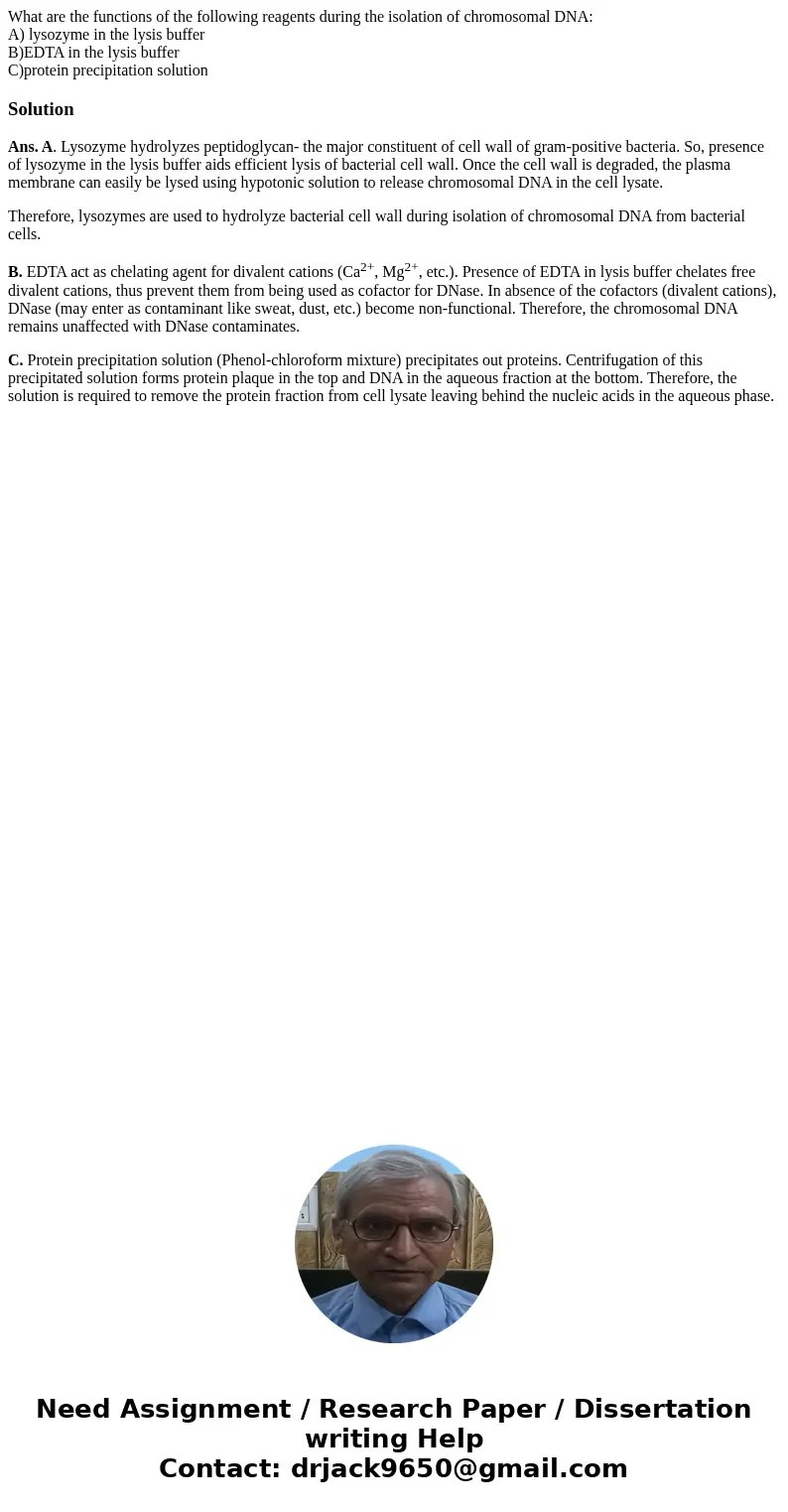What are the functions of the following reagents during the
What are the functions of the following reagents during the isolation of chromosomal DNA:
A) lysozyme in the lysis buffer
B)EDTA in the lysis buffer
C)protein precipitation solution
Solution
Ans. A. Lysozyme hydrolyzes peptidoglycan- the major constituent of cell wall of gram-positive bacteria. So, presence of lysozyme in the lysis buffer aids efficient lysis of bacterial cell wall. Once the cell wall is degraded, the plasma membrane can easily be lysed using hypotonic solution to release chromosomal DNA in the cell lysate.
Therefore, lysozymes are used to hydrolyze bacterial cell wall during isolation of chromosomal DNA from bacterial cells.
B. EDTA act as chelating agent for divalent cations (Ca2+, Mg2+, etc.). Presence of EDTA in lysis buffer chelates free divalent cations, thus prevent them from being used as cofactor for DNase. In absence of the cofactors (divalent cations), DNase (may enter as contaminant like sweat, dust, etc.) become non-functional. Therefore, the chromosomal DNA remains unaffected with DNase contaminates.
C. Protein precipitation solution (Phenol-chloroform mixture) precipitates out proteins. Centrifugation of this precipitated solution forms protein plaque in the top and DNA in the aqueous fraction at the bottom. Therefore, the solution is required to remove the protein fraction from cell lysate leaving behind the nucleic acids in the aqueous phase.

 Homework Sourse
Homework Sourse